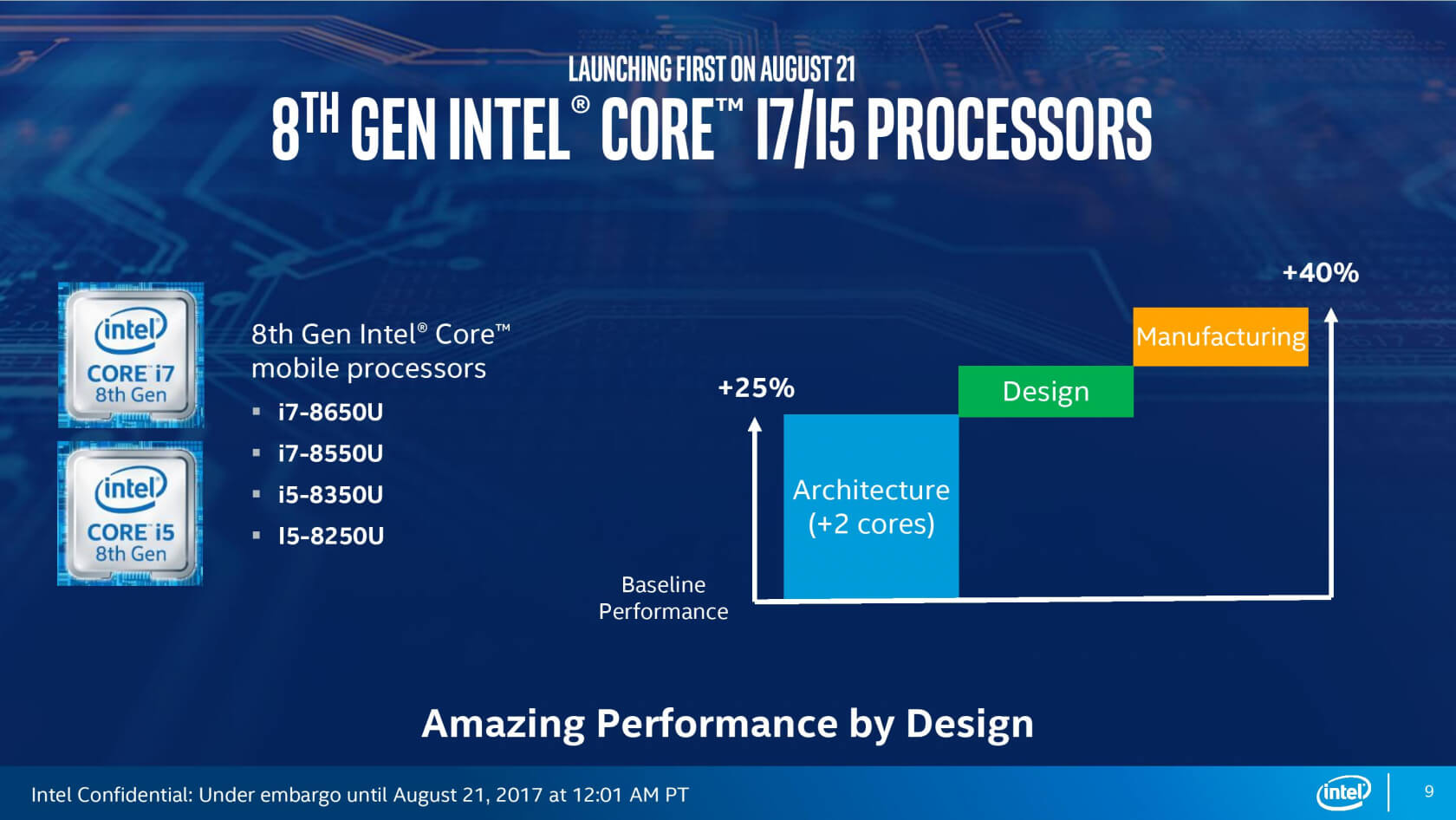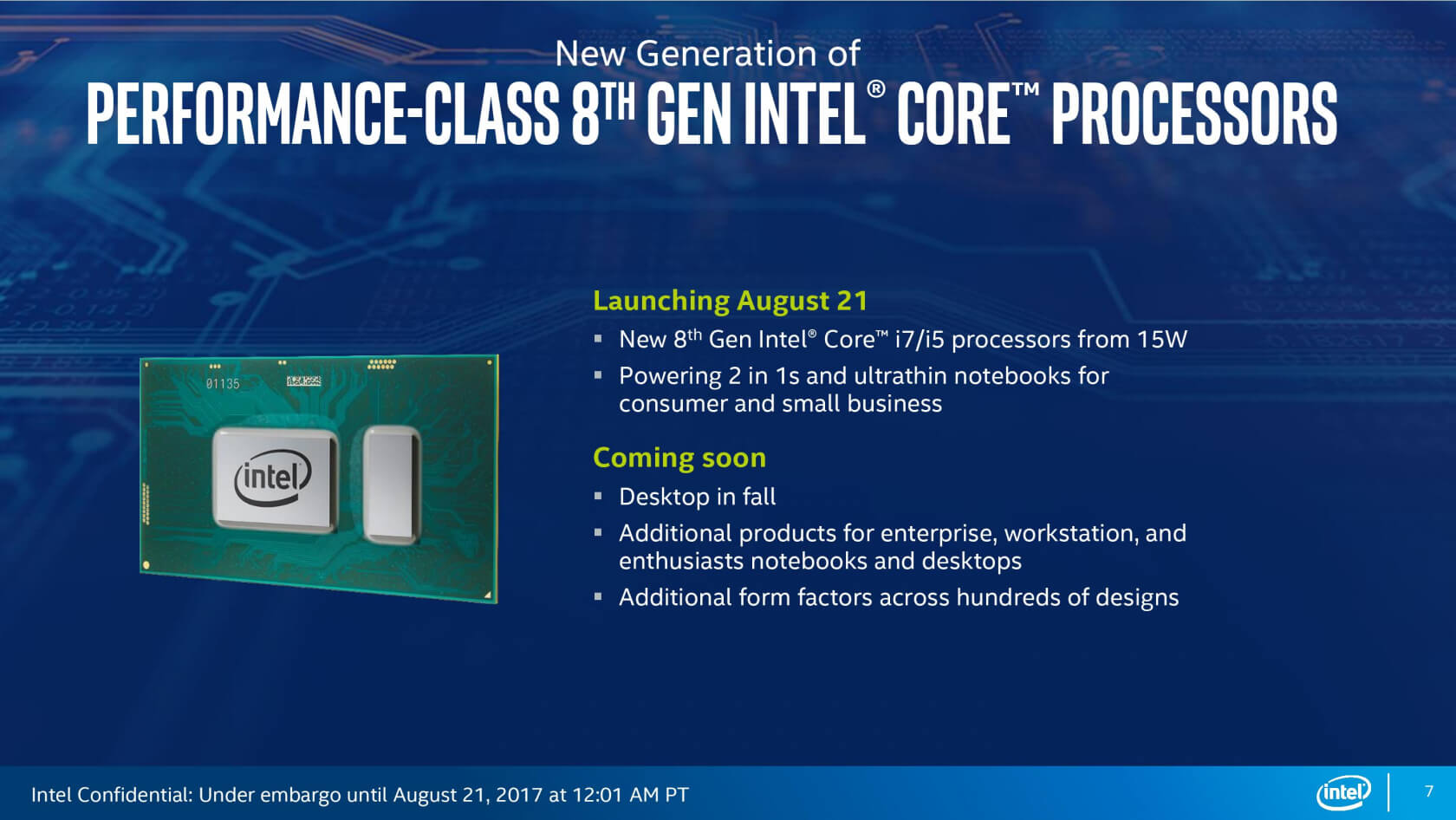This has been a large year for Intel low-strength mobile chips. For generations we’ve positioned up with sub-10% yr-on-yr overall performance improvements, having Intel that specialize in higher performance and longer battery existence. However, with AMD hot on Intel’s heels and set to release their own ultraportable processors in the close to future, Intel has determined that the time for incremental improvements is over.
- MSI GS70 Stealth Pro Gaming Laptop Review
- Razer Blade 14" Gaming Laptop Hands On
- HP Envy 14 Notebook Review
- Microsoft Surface 3 Review
Before we talk the particular adjustments to Intel’s new processors, permit’s communicate a chunk approximately the basics, particularly Intel’s confusing product line for 2017.
These new quad-center cellular processors fall into Intel’s 8th era lineup, which consists of merchandise from three separate architectures: Coffee Lake, Cannon Lake, and Kaby Lake Refresh. This is in stark evaluation to 7th gen merchandise, which all used the Kaby Lake architectures.

There are a multitude of reasons why Intel has long gone with a three structure break up for his or her 8th gen CPUs, but it basically comes right down to Intel’s manner nodes struggles, specifically in the transition to 10nm. It’s perplexing for lovers who like to dive into the architecture of Intel’s merchandise, even though most customers will only want to look “eightth era” branding to know they’re getting the modern CPUs of their respective categories.
At the moment, the three architectures that shape Intel’s eightth gen line are as follows:
- Coffee Lake. These are Intel’s 8th era CPUs for computers, and potentially excessive-overall performance laptops inside the destiny, built on a second refinement of Intel’s 14nm method (called 14nm++).
- Cannon Lake. These eightth gen processors are due for release in 2018, and encompass a 10nm die decrease of the Coffee Lake architecture. It’s not clean what components might be protected inside the Cannon Lake line, though it’s anticipated to be low-electricity mobile elements.
- Kaby Lake Refresh. These are Intel’s 8th generation CPUs for low-strength laptops, built the use of the same 14nm+ manner node and in large part the identical structure as Kaby Lake.
If you’re interested in Coffee Lake chips for the computer, you may study our Laptopright here, but for now we’ll be discussing Kaby Lake Refresh, or Kaby Lake-R, for ultraportable laptops.
As we noted in advance, the main improvement to Intel’s U-series 15W components this year is the leap from core, 4 thread processors with Kaby Lake, to 4 middle, eight thread processors with Kaby Lake Refresh. The doubling of cores and threads is the best fundamental trade right here, as Kaby Lake-R processors use the same microarchitecture (aside from minor tweaks) and the identical 14nm+ manufacturing node as closing yr’s 7th gen cell components.
Intel’s low-electricity cell chips have in the end transitioned from a twin-middle to quad-middle layout for the primary time
The exchange-off for more cores and threads within the same 15W TDP is base frequency, that is universally lower. On the alternative hand, Turbo frequencies are better, even four-middle Turbo speeds, even as there’s also a reachable increase to L3 cache: 8MB for Core i7 components, and 6MB for Core i5 components. All Kaby Lake-R parts support LPDDR3 and DDR4 reminiscence, with DDR4 assist growing from DDR4-2133 to DDR4-2400.
| Spec | Core i7-8550U | Core i7-7500U | Core i7-6500U | Core i7-5500U |
| Cores/Threads | four/eight | 2/4 | ||
| Base Clock | 1.eight GHz | 2.7 GHz | 2.five GHz | 2.four GHz |
| 1C Turbo Clock | four.zero GHz | 3.5 GHz | 3.1 GHz | three.zero GHz |
| 2CTurbo Clock | four.zero GHz | 3.five GHz | three.0 GHz | 2.9 GHz |
| 4C Turbo Clock | 3.7 GHz | N/A | ||
| GPU | UHD 620 | HD 620 | HD 520 | HD 5500 |
| Max. GPU Clock | 1150 MHz | 1050 MHz | 1000 MHz | |
| L3 Cache | 8MB | 4MB | ||
| TDP | 15W | |||
| Unit Price | $409 | $393 | ||
On the pix the front, the four Kaby Lake-R processors on this initial eightth gen release use Intel’s UHD 620 CPU, that is identical to the HD 620 used earlier than. In different words, we’re nonetheless seeing 24 execution units with clock speeds of 1100 and 1150 MHz for Core i7 and i5 CPUs, respectively.
All matters taken into consideration, the Core ix-8x50U line is an immediate upgrade at the Core ix-7x00U series from closing year. We’ll ought to wait a piece longer for Intel to release their standard array of 15W and 28W U-collection CPUs with extra effective Iris images, as well as extremely-low-energy Y-collection elements.
Of unique hobby in this Aurorais the Core i7-8550U, that's the direct successor to ultimate year’s Core i7-7500U. The i7-8550U is the second one-from-pinnacle Kaby Lake-R processor, with the flagship (for now) i7-8650U taking the overall performance crown with slightly higher clocks.
As with all Kaby Lake-R processors, the main benefit here is the bounce from a 2C/4T layout to 4C/8T. Base clock speeds have decreased from 2.7 to at least one.8 GHz, permitting the addition of an additional two cores into the identical 15W TDP. However, boost frequencies have increased from 3.five to four.0 GHz for single and twin-center utilization, and three.7 GHz for all-center usage, provided there may be sufficient power and thermal headroom. L3 cache is likewise up from 4MB to 8MB.
On the GPU aspect, underneath the brand new call of UHD 620, the i7-8550U’s GPU is almost similar to before however clocked up to 1150 MHz, that's a a hundred MHz clock speed gain, throughout the identical 24 execution devices.
While you could’t go out and by way of a U-collection chip off the shelf, it’s exciting to word that costs have extended slightly over closing yr’s lineup. The i7-8550U is now $409, up $sixteen from $393. This have to have no cloth effect on computer pricing, however it’s no real marvel that a larger CPU with extra cores costs barely more.

This performance evaluate of the Core i7-8550U changed into carried out on a Dell Inspiron 13 7000 2-in-1, which gives a decent baseline platform for checking out with its 16GB of DDR4-2400 RAM, high-performance 512GB m.2 SSD, and 1080p show. The results you’ll see in the coming pages must give you an amazing concept of ways the i7-8550U will perform in a number devices, not simply the computer we examined with.
Looking over the last one year of computer checking out we did with Kaby Lake, laptops that use the same CPU can range via up to five percentage in performance benchmarks...
Although, it’s important to be aware that genuine performance figures will vary by means of small amounts from device to device, as one of a kind laptops use one-of-a-kind thermal solutions and have different power targets. Looking over the last 365 days of pc testing we did with Kaby Lake, laptops that use the same CPU can range by up to five percentage in performance benchmarks, so maintain that in mind as we dive into how the Core i7-8550U performs.
0 Response to "Four Cores for Ultrabooks: Core i7-8550U Review"
Post a Comment